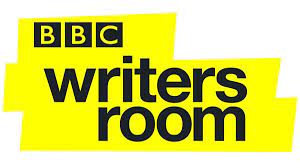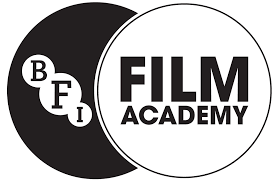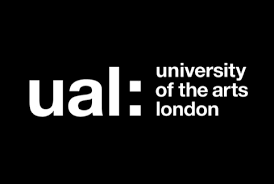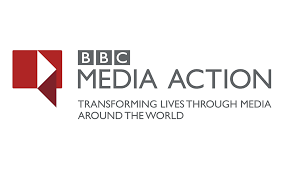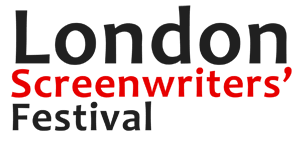Hi There,
This week, another guest article – this time from RAY MCBRIDE. Ray did an outstanding job as script editor on last year’s Channel 4 screenwriting course, has worked in the past on EASTENDERS and is now script editor on HOLBY CITY.
‘The other week I received a solicitous email from Pip asking if I may be vaguely interested in writing something vaguely related to screenwriting or something. And I immediately thought NO. F**k off. Then, in the absence of Shelley’s presence, I resorted to punching myself in the face, wrastling a little on the floor, then falling asleep…
Damnit, I thought this was one of those “working from home” diaries. Let me try again…
Introduction
Hello. I script edit a 60-minute TV show and a couple of thoughts have been syrupping me noodle recently. Not new thoughts. Not monkey-exploding-from-a-rock thoughts. But ones that have been pressing on me lobes nonetheless:
- Good scripts can produce bad episodes. Bad scripts can produce good episodes. WTF?!
- In this day and age, a full hour of TV can be a motherf**ker.
Harrumphing
Our screenwriting toolbox has nicked much from literary criticism, i.e. strategies that regard a text as a finished product rather than a stepping-stone to a finished product. Now, don’t get me wrong! I think those tools can be useful. I have nothing against them tools. But perhaps they’re only half the toolbox.
The problem is this: the application of literary theory to an event cannot recognise that which exceeds the knowledge of the text.
See, the spectator doesn’t read TV or film, a spectator experiences them.
Attention
Stakes – their development, characterisation and enunciation – will be the most effective ingredients in how well a show elicits, exercises and exorcises emotion across an episode. But, given the competition for our eyeballs, how do we ensure that viewers stick around long enough to let us set up stakes, to care about characters and be moved?
Hmm.
Allow me this detour…
Shot length is a unit of measurement in cinemetrics. In post-classical mainstream movie making average shot length has progressively decreased to barely a couple of seconds. Within such movies, filmmakers will often shorten shot lengths as they build toward a climax. Some suggest this trend mimics the natural fluctuations of human attention. Shot shortening is an expressive technique that evokes visual energy, fixes attention through intensified continuity, and elicits excitement by increasing event density that influences audience perceptions of time. At a cognitive level, short shot length = rapid pace = you risk missing new information if you look away for even a second! At a physiological level, if each shot conveys an event then this intensifies watchfulness.
Still awake? Well, in many ways this is intuitively obvious. But it made me think two things:
- We are our brains. We perceive first. Then use those perceptual inputs to inform how we feel (yes, it’s more complicated and iterative than that but for the purposes of this word count that’ll do). Writing a script is only half the job of making a show. How it is rendered into a percept will determine how it affects (or not) whichever perceiving brains are tuning in. So, if we begin – even only in small ways – to understand the brains that we want to experience our scripts then maybe we can begin to put a thumb on the scale and take back some control over the magic and loss we feel in the transition from script to broadcast episode.
- Instead of the quickening to a climax of film (described above) I have observed that sometimes the opposite is true of TV scripts. As writers or script editors, we have no influence over shot-length, but we do have influence over scene-length. Anecdotally, I’ve found those shows with shorter scenes in the first half of an episode are more effective at hooking me in. Quickly setting out their store and developing their stakes in that first half-hour brings me to a point where I can relish a slowing down in the second half, taking time to explore character and play out consequences in longer (perhaps more writerly/performative) sequences. Pace is not simply a tick-box for structural variety, but the principal means to fasten attention (i.e. increase the chances that viewers won’t flip channel) and as attention increases, so will emotional absorption, which means the hour passes more quickly as your viewer feels themselves transported.
Thought for the Day
I cannot emphasise enough how little effort I have put into writing this piece (Ed: cut out the humblebrag, Ray). I genuinely hope that Shelbo sees through its sophistry and refrains from including it in his superb newsletters. These are just musings and provocations.
All I’m really saying is that awareness of both perceptual and textual considerations may allow writers to better merge attention with character, to arouse and elicit, and ultimately transport viewers into an experiential involvement with their narratives. Then you got them beautiful suckers.’
Thank you very much Ray! I’m suitably provoked.
C21 DRAMA SERIES SCRIPT COMPETITION
The lovely folks at C21 have asked me to let you know about this opportunity, which has been won in previous years by two writers I know well (Philip Lawrence and Jan Smith). Although there is an entry fee, the prize is prestigious and significant and this is well worth entering. They are now open for entries and the entry period runs until September 30th.
The next newsletter – which will contain information about the 2021 CHANNEL 4 SCREENWRITING COURSE – will be on Friday August 7th.
Until then,
All the best
Phil
PHILIP SHELLEY
@PhilipShelley1
July 24th 2020


